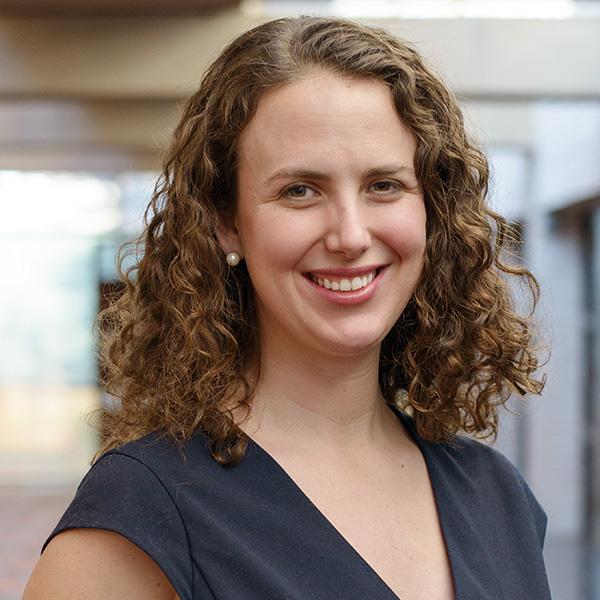Colorado Health Access Survey: Talk of the Towns

Last month, the Colorado Health Institute released results from the 2017 Colorado Health Access Survey. The CHAS gives Coloradans data and insights about what’s happening in health care regionally and statewide. This year’s report included some striking figures: We learned that the uninsured rate remained at an all-time low (just 6.5 percent!) and that, for the first time, less than half of Coloradans get health insurance through their employers.
But understanding health takes more than just data. That’s why CHI’s team spent the last week of September traveling across the state to share the survey's findings and discuss what the report shows — and doesn’t show — about health access, care, and use in Colorado.
We racked up some impressive numbers along the way:
- Towns that hosted CHAS presentations: 15
- Miles logged by CHI Staff: 8,604
- People reached: At least 700
At each event, we asked people about policies and practices driving change in their communities; about policy solutions suggested by the CHAS data; and about issues that future surveys should explore.
As you might expect, each town had its own priorities and questions. In rural Colorado, people were curious about telehealth and how that might relate to access. On the Western Slope, concerns about sky-high insurance premiums dominated. In one area, we learned about how a major employer's decision to stop covering insurance had pushed many residents onto the individual marketplaces. Throughout the state, there were questions about how the CHAS was conducted.
What They're Saying Around Colorado
Hover over a town to read audience comments from CHAS launch events:
var divElement = document.getElementById('viz1508433153645'); var vizElement = divElement.getElementsByTagName('object')[0]; vizElement.style.width='900px';vizElement.style.height='760px'; var scriptElement = document.createElement('script'); scriptElement.src = 'https://public.tableau.com/javascripts/api/viz_v1.js'; vizElement.parentNode.insertBefore(scriptElement, vizElement);
A few questions and themes came up at more than one CHAS launch event. Here are a few:
- Rural health matters – and people from other areas know too little about it. Rural Colorado fared worse on many indicators in the CHAS. And rural residents feel that many Coloradans don’t understand the challenges — and expenses — they face. One attendee suggested an entire report on rural issues and policy changes.
- Can CHAS get more information on people with disabilities, veterans, African Americans, Native Americans and Asian Americans? CHAS’s survey size of 10,000 Coloradans is large enough to provide a lot of information about regions, age groups, and other demographic categories. But even that sizable response doesn’t produce detailed data on many groups. In Denver, there was a call for CHI to figure out how to get and show more information about the health care experiences of racial and ethnic groups that make up a smaller portion of the overall population. In rural Colorado, attendees expressed interest in veterans’ health and in people with disabilities.
- Can CHAS data on income and affordability be more detailed? The 2017 CHAS includes information on people living in poverty. But around the state, especially in western Colorado, people wanted more insight into Coloradans who live above the poverty line but still have trouble affording expensive insurance premiums and deductibles.
- What’s happening with high premiums in Western Colorado, and how can that change? Throughout the western part of the state, attendees reported that many residents are struggling to afford insurance. Premiums and deductibles are often significantly higher here than elsewhere. People wanted to know why that’s the case, and what can be done about it.
- What do people understand about their insurance? At the events, we heard that some Coloradans with and without health coverage are confused about premiums, deductibles, what services are covered and how insurance systems work. There is interest in further research into what people understand about the complicated world of health insurance and care - and how that affects the care they choose to use and access.
- Can we get more information on substance use, behavioral, and mental health? The 2017 CHAS asked more questions about mental and behavioral health and substance abuse than in the past. But at almost every event, attendees wanted even more information on these issues.
- Can telehealth help? In Burlington, Craig and Gunnison, residents are interested in telehealth as a way to improve access to health care for rural residents. But telehealth isn’t a cure-all: Residents wondered whether telehealth can work in areas where internet service is poor, among other concerns.
- Hospitals, insurers, and billing: Especially in rural Colorado, people described confusion about hospital bills. One meeting attendee asked if we could look more closely at the finances of hospitals and insurers.
- What’s happening in other states? How does Colorado stack up and what can we learn?
- More research questions: Can CHAS data help us see whether spending more leads to better health? Can CHAS data reveal how proximity to a doctor affects access to care? How do high deductible plans influence decisions to get needed care?
And, finally, in Burlington, a town on the Eastern Plains, one attendee suggested that CHAS include what regions are doing right about health. That’s a good reminder that, for all the gaps and challenges that remain, individual Coloradans and organizations are doing great work to support and improve health throughout the state.
These events were just the beginning of CHI’s work on sharing the data from the CHAS and exploring its implications for policy and practice. Stay tuned for more analysis of these issues.
Find CHI on Facebook and Twitter


